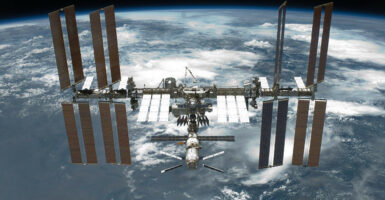Deep Space Travel May Hasten Alzheimer’s Disease
This article is more than 2 years old

With as much as there is to do on this planet, one might think it would be enough to satisfy every whim and fancy. But there’s an entire universe out there that has barely been explored, and however many generations it takes, humans are going to make those kinds of trips. But hopefully with an all new stance on precautions.
For a study published in the journal PLOS ONE, researchers from the University of Rochester Medical Center (URMC) exposed mice to varying degrees of radiation, including levels similar to those experienced by an astronaut flying to Mars. Lead researcher M. Kerry O’Banion, professor of the Department of Neurobiology and Anatomy, and his team studied the effects of high-mass, highly charged particles on neurodegeneration, focusing on the brain processes known to be a part of the development of Alzheimer’s. They did their research partly at the NASA Space Radiation Laboratory at Long Island’s Brookhaven National Laboratory, which has the particle accelerators needed to smash matter and reproduce radioactive particles found in space.
After being exposed to the radiation, the mice were then evaluated using a series of experiments involving item and place recollection, and the exposed mice were far more likely to do worse in the tests, and the symptoms showed up earlier than they would have otherwise. Their brains also showed vascular alterations and a high rate of beta amyloid, one of Alzheimer’s telltale proteins. It’s somewhat unsettling to know that science has such an exact formula for Alzheimer’s in mice due to the untold number of intentional infections of the disease.
“These findings clearly suggest that exposure to radiation in space has the potential to accelerate the development of Alzheimer’s disease,” said O’Banion. “This is yet another factor that NASA, which is clearly concerned about the health risks to its astronauts, will need to take into account as it plans future missions.”
It’s less than a decade until NASA’s planned manned mission to an asteroid, and a little over 20 years until the Mars mission is planned. Any amount of things can change between now and then, of course. Let’s hope that the changes are for the better, and we don’t soon find out that cosmic radiation also causes baldness and erectile dysfunction, for we might never see men in space again.












